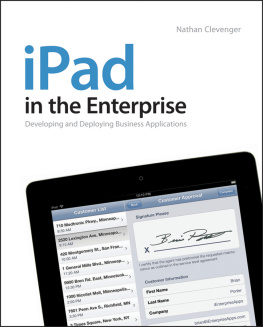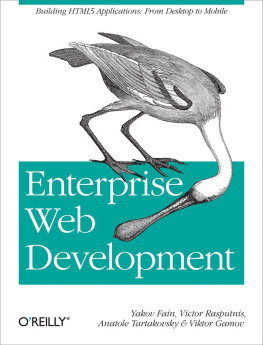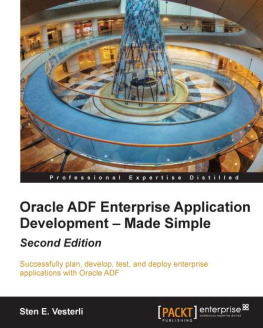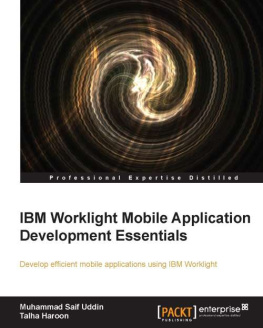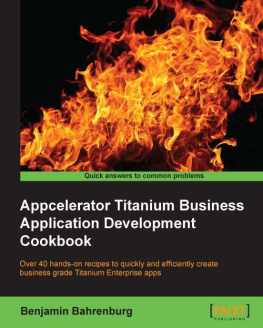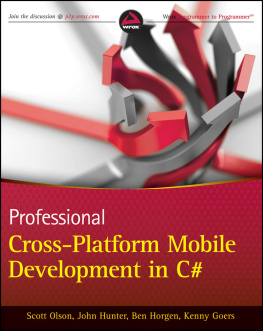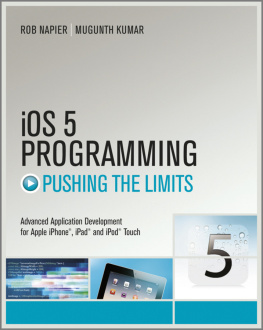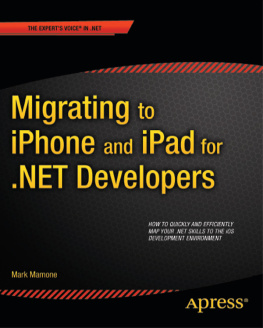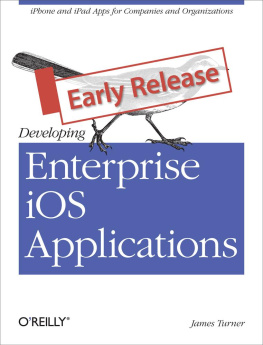Part I
Strategy
In This Part
Chapter 1: Understanding the Mobile Industry Landscape
Chapter 2: Embracing the Consumerization of IT
Chapter 3: Developing an Enterprise Mobility Strategy
Chapter 4: Creating an Application Road Map
Chapter 1
Understanding the Mobile Industry Landscape
What's in this Chapter?
- The iPad is a transformative technology
- Business technology is being influenced by consumers
- Apple is acting as a catalyst for change in the industry
- How the app revolution started with the iPhone
- The app revolution has extended to the iPad
- How Apple is facing the innovator's dilemma
The iPad is transforming the way businesses use technology. More than just a consumer phenomenon, the iPad is disrupting business models and power structures within corporate information technology (IT) departments. Within 90 days of being released, the device was already adopted by 50 percent of Fortune 100 companies. This unprecedented rate of market penetration represents a fundamental shift in the way technology enters the enterprise.
IT departments have traditionally had complete control over the selection and management of technology, but that iron-clad grip is being threatened. Corporate employees, who are consumers themselves, are bringing their own personal devices into the workplace. While many IT departments have moved quickly to ban this, such a ban is very difficult to enforce, especially when executive leaders are among the offenders. Even when it can be enforced, the ban puts significant pressure on IT departments to support the popularized consumer technologies demanded by the employee base.
Many industry leaders have begun to recognize that it can be in the company's best interest to support this trend instead of fighting it. Gartner, Inc., the market-moving analyst and technology advisory firm, issued an advisory recommending that businesses embrace the iPad. Gartner went so far as to say that, because the iPad is such a disruptive technology, there will be significant obstacles to its adoption, and that top executive management should get involved to clear barriers to the iPad within the enterprise.
It is not usually the role of the CEO to get directly involved in specific technology device decisions, but Apple's iPad is an exception, said Stephen Prentice, Gartner Fellow and vice president. It is more than just the latest consumer gadget, and CEOs and business leaders should initiate a dialogue with their CIOs about it if they have not already done so.
Disruptive technologies can be both powerful and dangerous to companies that employ them, and the iPad is no exception. But according to Prentice, Even if you think it is just a passing fad, the cost of early action is low, while the price of delay may well be extremely high.
Apple as the Catalyst
To fully understand the potential for the iPad in the enterprise, it is important to take a step back and look at the big picture. The iPad's explosive growth is not set in a vacuum. Multiple factors and trends have contributed to create the current environment.
Smartphones were around for years before Apple released the iPhone, and tablet-based computers were on the market for more than a decade before the launch of the iPad. Although Apple did not invent these technologies, it simplified the user experience and brought these technologies to the mainstream consumer with mass appeal.
When Apple launched the iPhone in June of 2007, it sparked unprecedented sales of smartphones. Building on Apple's momentum with the iPod, the iPhone had instant appeal to a large user base, whose members carried both their cell phones and iPods and could now replace both devices with a single piece of hardware.
Exchange ActiveSync Standardization
The first generation iPhone was undoubtedly a consumer phenomenon, but it was not at all enterprise-friendly. IT organizations were quick to announce policies specifically stating that iPhones were not supported devices and were not allowed to access corporate networks or data. Many users were not happy, but there wasn't really anything they could do, since the iPhone really wasn't ready for the enterprise.
With the launch of iPhone OS 2.0 in June 2008, Apple made a subtle yet brilliantly strategic move that shifted the power within the industry. And by early 2008, Microsoft's Windows Mobile platform was just beginning to gather momentum in taking significant market share from the Research in Motion (RIM) BlackBerry. While RIM was selling the BlackBerry Enterprise Server (BES), Microsoft had decided to compete by integrating push e-mail as well as calendar and contact sync into Exchange Server 2003. BES is a server-based product that provides BlackBerry smartphones with wireless mobile access to messaging servers like Microsoft Exchange or IBM Lotus Notes. When Microsoft decided to build mobile synchronization capability directly into Exchange Server with the Exchange ActiveSync, it eliminated the need for a separate server product like RIM's BES. This created an opportunity for Apple to come into the enterprise through the back door by licensing Exchange ActiveSync from Microsoft and allowed iPhones and iPod touches using the iPhone OS 2.0 to connect to corporate networks and access business information.
All of a sudden, personally owned iPhones were coming into the enterprise through the same Microsoft Exchange ActiveSync infrastructure that the IT department had set up to support corporate-owned deployments of Windows Mobile devices. Even though Microsoft Exchange allowed for the ability to block iPhones from connecting, many organizations did not take advantage of this feature. Since the iPhone enforced most of the basic security and device management policies offered by Exchange ActiveSync, organizations could, for instance, require that users configure a power-on passcode for their devices, as well as remotely wipe their iPhones if these were lost or stolen.
In order to provide enterprise-friendly support for the iPhone, Google licensed Exchange ActiveSync for its cloud-based Google Apps. Even IBM licensed Exchange ActiveSync from Microsoft so that Lotus Notes could support the iPhone. The product, released in late 2009, was called Lotus Notes Traveler. Up to that point, the only way for organizations with Lotus Notes to get mobile e-mail was through the BlackBerry Enterprise Server, which could sit on top of either Microsoft Exchange or Lotus Notes.
Except for RIM's BlackBerry, the major mobile platforms were also standardizing on Exchange ActiveSync. In addition to Microsoft's mobile platforms and the iPhone, Palm/HP Web OS, Android, and even Nokia smartphones could now access enterprise e-mail, contacts, and calendar on almost any messaging environment: Microsoft Exchange, Lotus Notes, or Google Apps. Virtually overnight, RIM went from being the dominant messaging platform to a proprietary solution struggling to stay relevant.
iPhone OS 3.0 arrived in June 2009 with additional security and device management Exchange ActiveSync policies. The iPhone 3GS also brought hardware-based data encryption to the platform along with the ability to enforce the rule that only hardware-encryption-capable iPhone devices were allowed to connect. These events contributed to setting the stage for the iPad's success.
Tablets Go Mainstream
When the rumors of an Apple tablet finally turned out to be true, the product turned out to be more successful than almost anyone had expected. Apple's CEO, Steve Jobs, unveiled the iPad on Jan. 27, 2010, as a magical and revolutionary device at an unbelievable price. Many pundits predicted that it would be a niche device like so many of the tablets that came before it.

